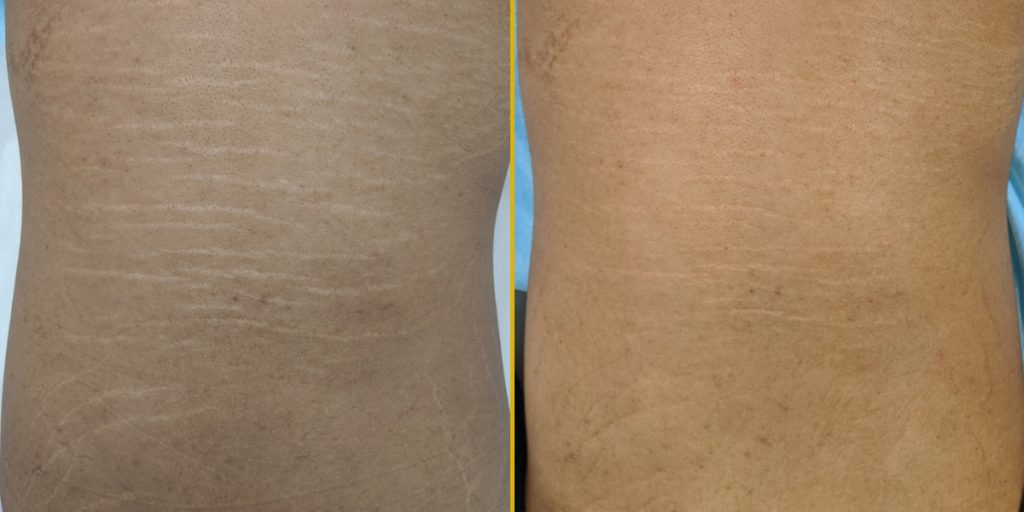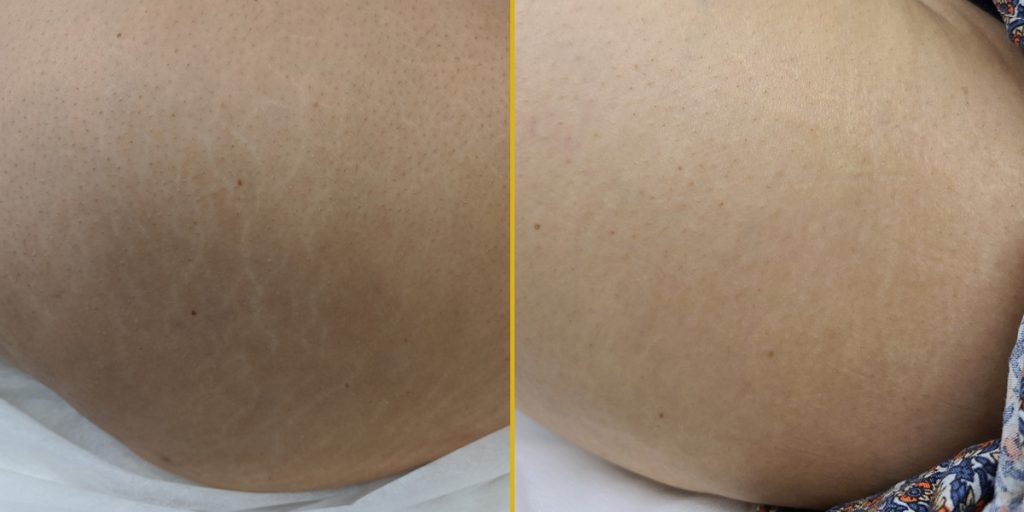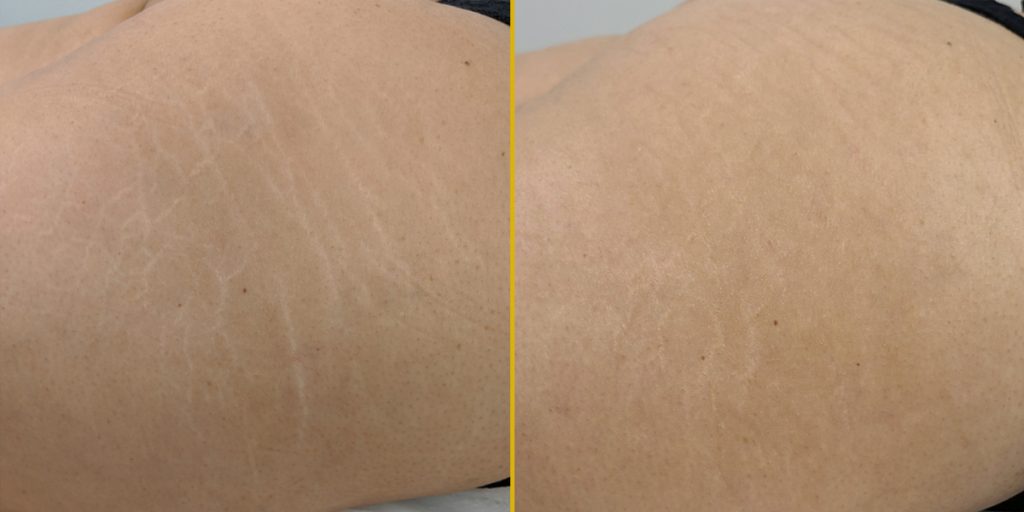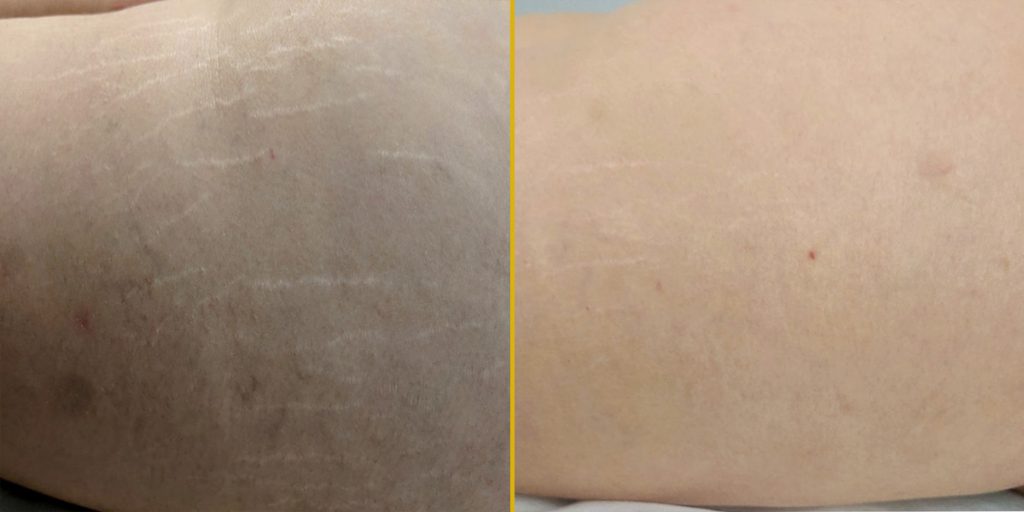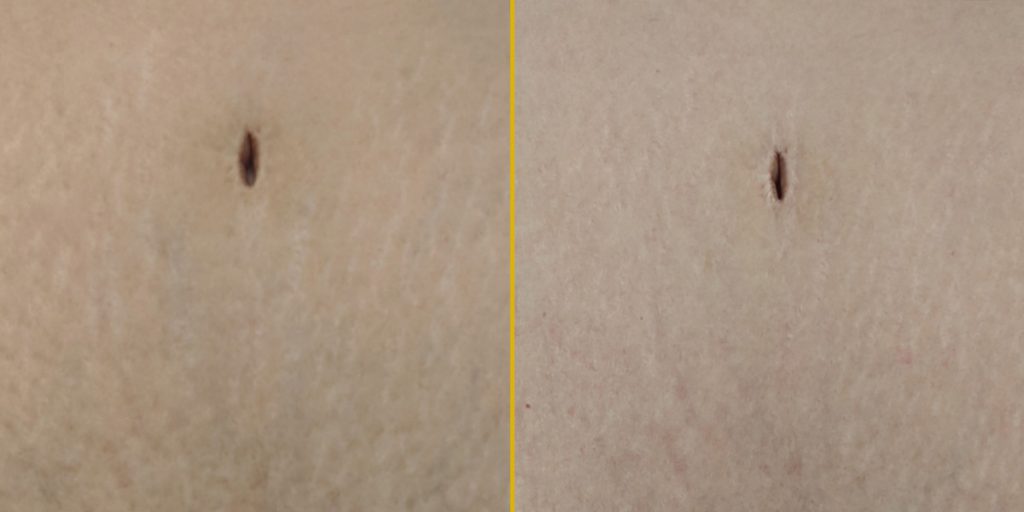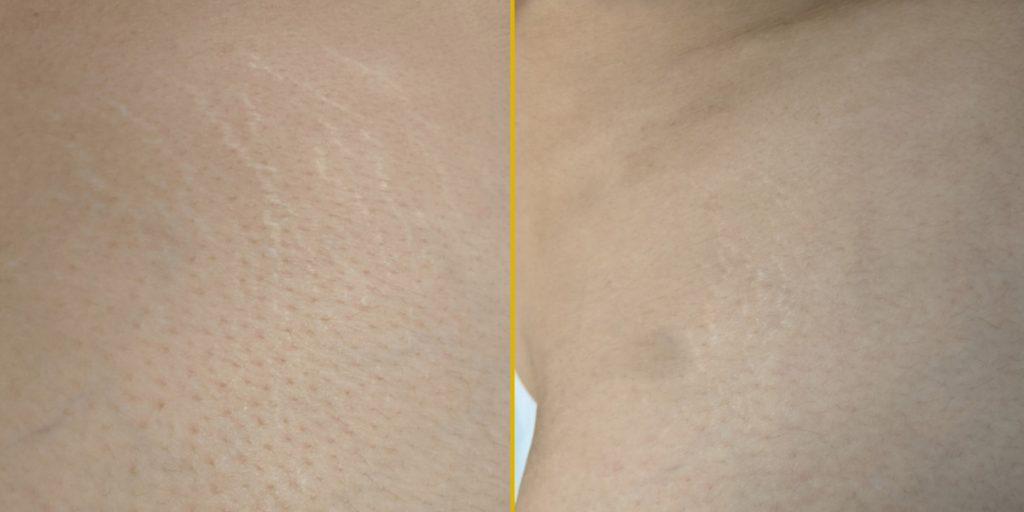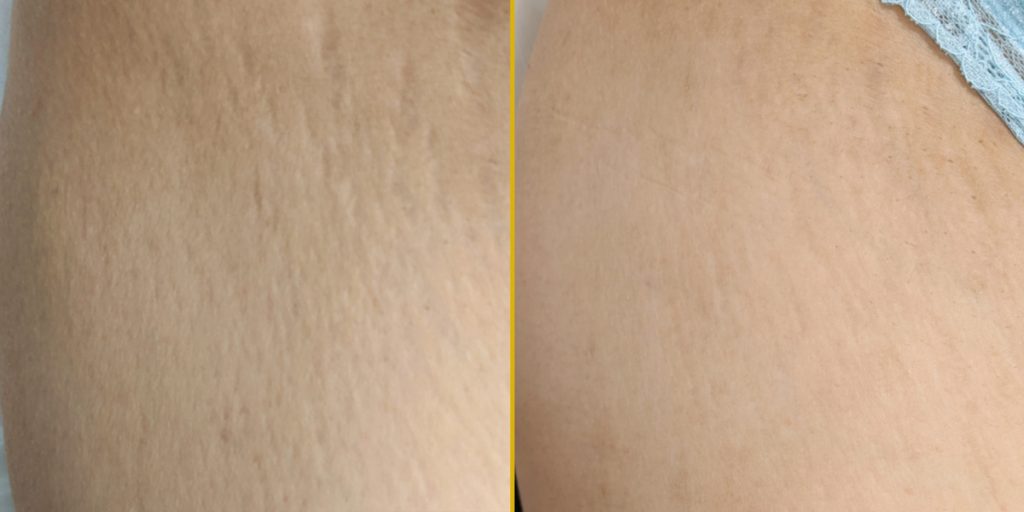Stretch Marks Removal
Find out how to get rid of stretch marks

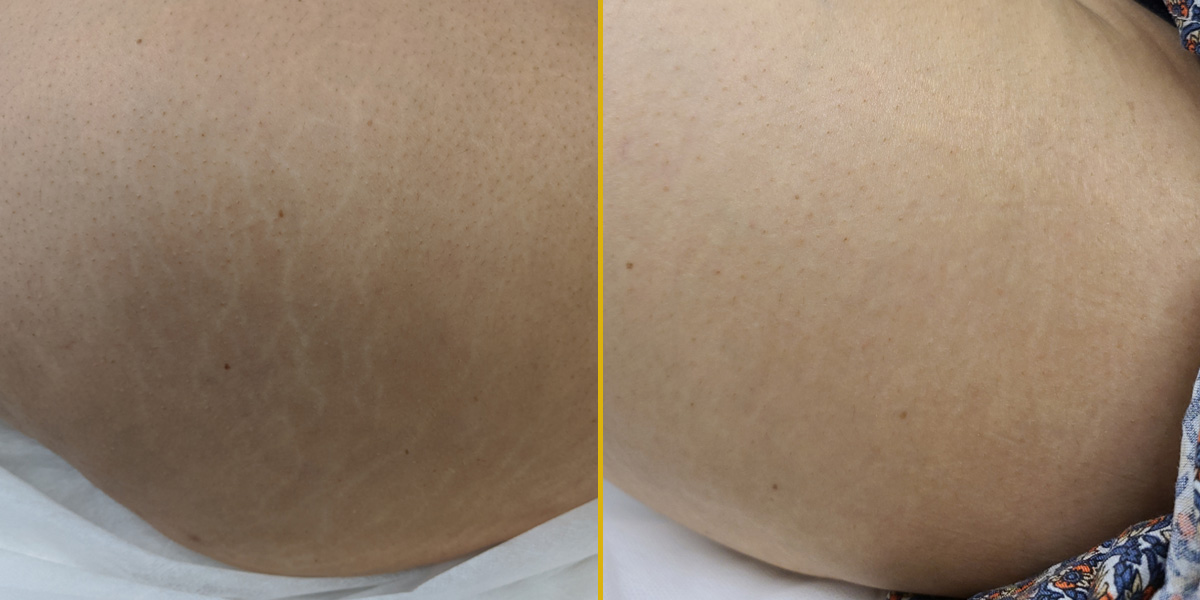
Want your stretch marks to be less noticeable?
At Contour Body Lab we treat stretch marks using the Inkless Method. The Inkless Method uses a specific needling technique along with a skin regenerating serum to treat each stretch mark individually, helping boost the production of collagen and elastin. This treatment can improve the texture, depth and colour contrast of stretch marks helping them blend in more with the surrounding skin.
- Suitable for all skin types
- Improve texture and depth
- Improve colour contrast
- Lasting results
- Works on fresh & old stretch marks
- Suitable for all skin types
- Improve texture and depth
- Improve colour contrast
- Lasting results
- Works on fresh & old stretch marks
- Suitable for all skin types
- Improve texture and depth
- Improve colour contrast
- Lasting results
- Works on fresh & old stretch marks
Request a FREE stretch marks removal Consultation
Request a FREE stretch marks removal Consultation
Stretch Marks Removal Treatment in Vancouver
Do you live in Vancouver and want to get rid of your stretch marks?
Many people have tried stretch mark removal treatments with little results. At Contour Body Lab we offer an effective stretch mark removal treatment to help you be comfortable and confident in your own skin!
We believe that our approach is one of the best stretch mark treatment options currently available in Vancouver for diminishing the appearance of red stretch marks, purple stretch marks and even old stretch marks.
Stretch Marks Removal Results
Request Your FREE Consultation
Have you tried stretch mark removal treatments without results?
CBL Stretch Marks Treatment
vs.
Laser Stretch Marks Treatment
Our stretch mark treatment is different and more effective than laser! Laser might improve texture, but it usually cannot return pigmentation. This is why laser is not very effective on older, white stretch marks. Our treatment affects both the superficial and deeper layer of the skin causing the formation of new melanin cells and helping naturally re-pigment the stretch marks.
CBL Stretch Marks Treatment
vs.
Microneedling for Stretch Marks
The CBL Inkless Method is the most precise and intense form of skin needling out there for treating stretch marks. Our treatment uses a tattoo gun and tattoo needles. Tattoo needles have a much tighter configuration than microneedling cartridges. Different needle configurations and lengths can be selected based on the nature of the stretch marks in order to precisely needle within their borders. This allows for intense skin stimulation where needed while sparring the surrounding skin and producing superior results.
What are Stretch Marks?
Stretch marks or striae are a form of scarring in the skin, and it is believed that there is a combination of predisposing factors that could influence their appearance such as:
- Genetics – the study of stretch marks suggest that determinant genes responsible for the formation of collagen and elastin play a role in the appearance of stretch marks
- Mechanical Agents – excessive stretching of the skin, especially when it occurs suddenly during episodes of rapid growth such as due to pregnancy, excessive weight gain, muscle hypertrophy (body building), growth spurts, etc. causes damage to collagen and elastin fibers
- Medications – some medications such as corticosteroids contribute to the appearance of stretch marks
What are the Types of Stretch Marks?
The main types of stretch marks are:
- Striae Rubrae – the acute phase of stretch marks, due to the extensive stretching of the dermis. Stretch marks appear pink or red and might be itchy.
- Striae Albae – an advanced or chronic stage that happens months or years after the acute phase. The stretch marks appear white or faded.
- Striae Caerulea or Nigra – these stretch marks appear in darker skin tones and appear purple or black.
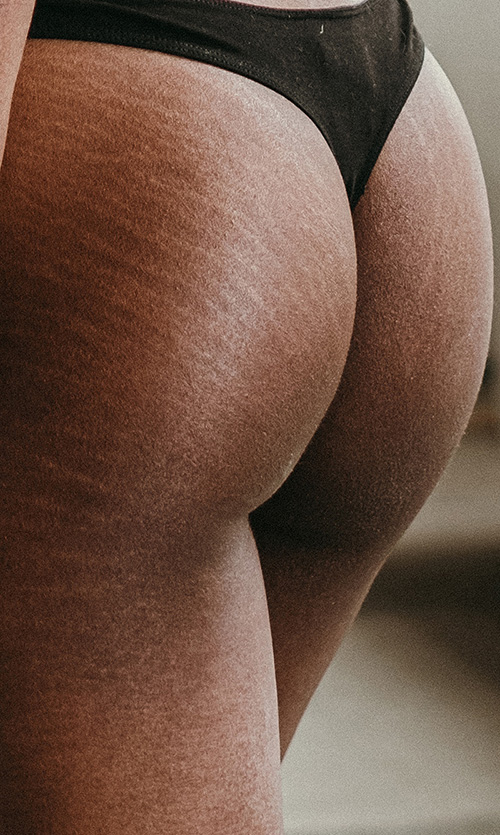
What are the Types of Stretch Marks?
The main types of stretch marks are:
- Striae Rubrae – the acute phase of stretch marks, due to the extensive stretching of the dermis. Stretch marks appear pink or red and might be itchy.
- Striae Albae – an advanced or chronic stage that happens months or years after the acute phase. The stretch marks appear white or faded.
- Striae Caerulea or Nigra – these stretch marks appear in darker skin tones and appear purple or black.
Stretch Marks Treatment FAQ
Am I a good candidate for stretch marks treatments?
If you are wondering whether you are a good candidate email us as a photo taken in clear lighting of your area of concern for assessment. Generally if your stretch marks are lighter than your skin tone or red then they can be treated. Stretch marks that are wide, deep and associated with loose skin are more difficult to treat and will be taken on on a case by case basis. Thin and shallow stretch marks make the best candidates for treatment. At this time we do not treat purple, brown or black stretch marks.
Can stretch marks be removed?
The only way to completely remove stretch marks is by removing the affected skin, such during a tummy tuck. However, even though stretch marks cannot completely removed, they can be improved! Success varies depending on how wide and deep the stretch marks are, the client’s overall health, age, and skin quality as well as skin tone. Fine and shallow stretch marks tend to improve the quickest, while wide and deep stretch marks need more treatments. Darker skin tones tend to re-pigment the quickest due to higher levels of melanin in the skin.
How many stretch marks treatments will I need?
We usually recommend three stretch mark treatment sessions in order to achieve a noticeable improvement. If you have wide and/or deep stretch marks you might need more sessions. If you have a darker skin tone and your stretch marks are thin and shallow you might need less than three sessions. Sessions are carried out 6 – 12 weeks apart in order to give your body time to heal and build collagen.
How long do stretch marks treatment results last?
For most people results are permanent. You might need a touch up in the event of weight fluctuations that stress the treated area again.
